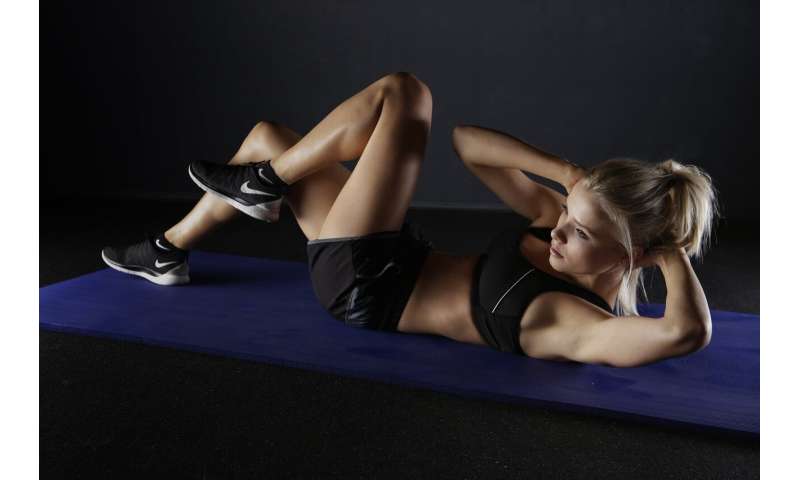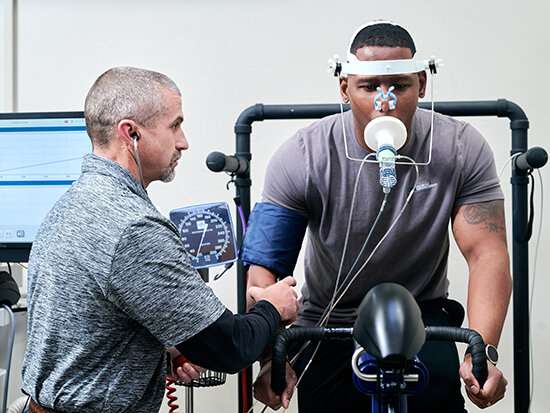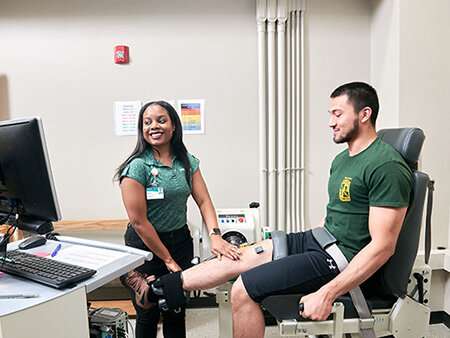Research project looks to understand how exercise affects your body all the way down to your molecules

Researchers want to know what happens in your body at the molecular level when you exercise. In the largest exercise research program of its kind, researchers at the University of Alabama at Birmingham are part of a National Institutes of Health effort to collect and turn data from nearly 2,600 volunteers into comprehensive maps of the molecular changes in the body due to exercise.
UAB’s Center for Exercise Medicine is one of the clinical sites nationwide participating in the NIH-funded Molecular Transducers of Physical Activity Consortium, or MoTrPAC, which aims to increase our understanding by measuring molecular changes in healthy adults and children before, during and after exercise.
“It is well-known from decades of scientific research that physical activity has substantial health benefits; but we do not fully understand why, especially at the molecular level,” said Marcas Bamman, Ph.D., professor in the UAB Department of Cell, Developmental and Integrative Biology in the School of Medicine and director of the Center for Exercise Medicine.
“The large study size is meant to account for person-to-person variation, and to reveal differences based on demographics like age, race and gender.”
MoTrPAC researchers published a paper detailing their approach to this ambitious research project. They are currently reviewing lessons from an initial phase with a smaller group of adult volunteers and multiple rounds of preclinical animal model studies to optimize their protocols and prepare to scale up for full recruitment.
“MoTrPAC was launched to fill an important gap in exercise research,” said NIH Director Francis S. Collins, M.D., Ph.D. “It shifts focus from a specific organ or disease, to a fundamental understanding of exercise at the molecular level—an understanding that may lead to personalized, prescribed exercise regimens based on an individual’s needs and traits.”
The MoTrPAC clinical study pairs methods well-established in exercise research with unique study aspects to move our fundamental understanding of exercise forward. One of the most distinctive study features is its size. MoTrPAC set the ambitious goal among its 11 clinical sites to recruit about 2,600 healthy volunteers across a wide age range (10 to 60-plus years old) and with balanced participation by the sexes.
Part of the study will test how the response to exercise changes after generally inactive participants complete a 12-week supervised exercise regimen. Sedentary adults will be randomly assigned to an endurance training regimen (treadmill, cycling), a resistance training regimen (weightlifting) or an inactive control group. Low-activity children will be randomly assigned to an endurance training regimen or to a control group where they pursue their normal activities. Contributing to the overall size of the study is a separate group of highly active adults and youths who will help researchers understand what exercise looks like at the molecular level in those who have exercised vigorously and consistently over an extended period.
Another unique facet of MoTrPAC is that volunteers provide samples—or biospecimens—before, during and after exercise that will go through a complex array of molecular assays. Adults provide blood and fat and muscle tissues, while children provide only blood samples.
Recruitment currently is on-hold due to safety concerns over COVID-19, and will resume when it is safe to do so. To see if a MoTrPAC clinical center will be recruiting near you, visit motrpac.org/join/volunteerHome.cfm.
“Ultimately, MoTrPAC aims to have a positive impact on human health,” Bamman said. “The study and resulting data integration are an immense undertaking, and provide an unprecedented opportunity to explore the molecular basis for the benefits of exercise. The information MoTrPAC assembles about endurance and resistance exercise in a wide range of individuals and in different tissues may influence exercise guidelines, making them more tailored for specific groups of people.”
Source: Read Full Article


